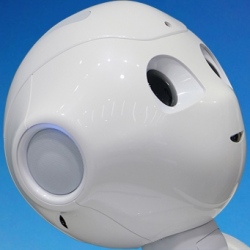
Scientists from around Europe are currently working on language-teaching machines more complex than anything previously dreamed up. These devices will help students learn basic vocabulary and simple stories, using microphones to listen, cameras to watch, and artificial neural networks that will analyze all the information that’s collected.
The machines are part of L2TOR (pronounced “El Tutor”), a program funded by the European Union to develop artificially intelligent teachers for preschool-aged children.
But the machines won’t only teach and collect data on their students’ language skills, they’ll also monitor things like joy, sadness, boredom, and confusion. Human teachers can see and hear their students and make sense of all nonverbal cues they get from the class; these machines are being designed to do the same.
“The problem with previous generations of teaching machines was their complete lack of social intelligence,” says Stefan Kopp, an artificial-intelligence researcher at Bielefeld University in Germany and one of the scientists working on L2TOR. “Yet it’s possible to design emphatic machines.
Our robots will notice tears, smiles, frowns, yawns … and dynamically adjust to how a child feels.” Past research has shown that “affect-sensitive” teaching systems, as they’re known, may be more effective at imparting knowledge than machines that don’t take emotions and experience into account.
The L2TOR researchers who launched their project earlier this month, still have a few years before they can measure their technology against human educators, but similar projects have offered some hints about potential challenges.
FACET, a commercially available image-processing software that analyzes 19 different facial-muscle movements, works with nearly 80 percent accuracy. Earlier this year, a research team at the University of Notre Dame used it to identify children’s boredom, confusion, and delight as they played educational games, using videos taken with laptop cameras in real classrooms. In more than one-third of instances, FACET recognized nothing at all.
Kids wriggled, covered their faces with their hands, talked with their friends, all sorts of things, except for sitting still in front of the cameras.
And successfully interpreting students’ emotions is just one challenge; knowing how to react to that information is another. What should a robot do with a 5-year-old who is frustrated, or bored, or has just thrown a paper airplane right into its robotic face?
To figure out how to imbue their machines with human-like reaction skills, Kopp and his colleagues plan to spend some time in kindergarten classrooms, observing the teachers at work. “We need to learn more about their methods, learn from their experience, and then program our robots to act like them,” Kopp says.
“We want the machines to be as friendly to kids as possible, yet I think a robot should react to bad behavior.” The challenge is figuring out how these machines can exert authority in a way that teaches the kids how to behave, in addition to the lessons of the day.
